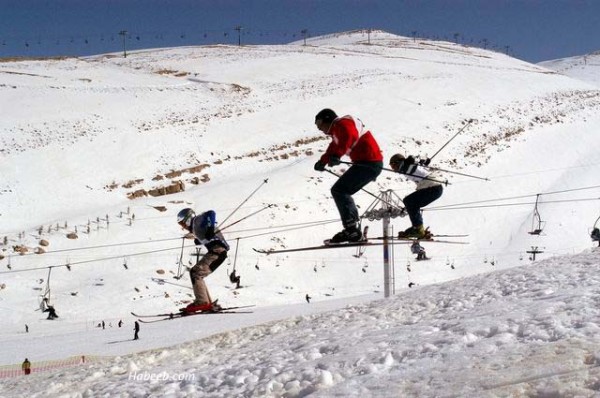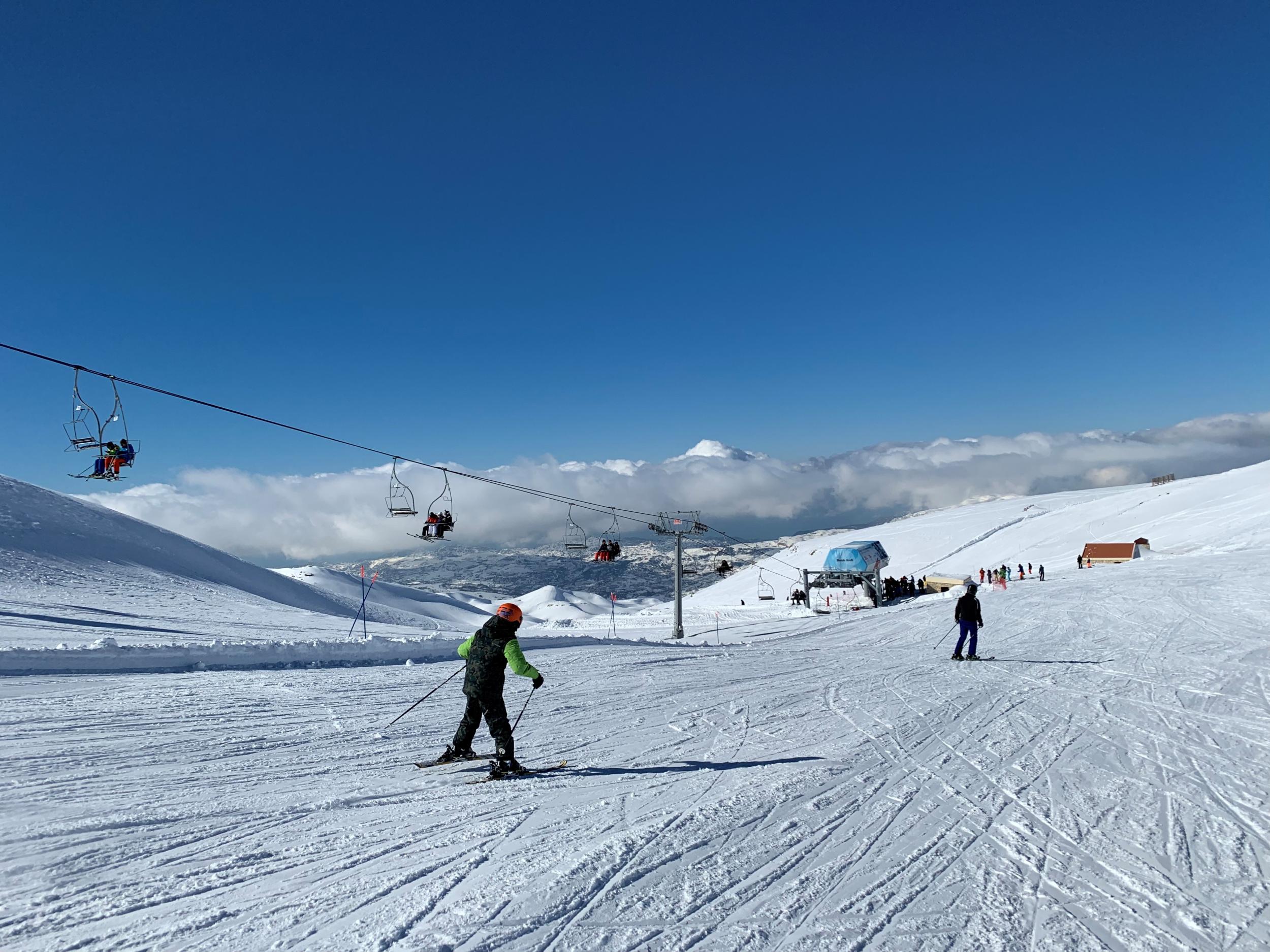
By Stephanie d’Arc Taylor
No offence, but you’re probably wrong about Lebanon. This is a country that upends visitors’ preconceived notions like no other.
Think it’s dangerous? You’re many times more likely to be robbed back home, pretty much regardless of where you’re from. Think they don’t like Westerners? Lebanese faces light up when you say “America” or “UK”; and in seconds you’ll be hearing about their second cousin twice removed who loves his life in Clearwater, Florida. Think it’s a barren desert? You’ll happily be proved wrong by Lebanon’s lushly forested valleys, waterfall-fed swimming holes and snow-capped peaks.
It’s the snow-capped peaks we’re here to talk about today. Enterprising Lebanese students living in Switzerland introduced the first skiing to the Mount Lebanon range in the early 20th century. Today there are six resorts; the biggest and best-provisioned is Mzaar Kfardebian in the village of Faraya, just over an hour’s drive from capital Beirut.
Skiing at Mzaar is a literal fraction of the price of many resorts in Europe, not to mention North America (a one-day pass at Aspen Snowmass last winter was $169).
Mzaar isn’t luxury skiing – lifts might be described as rickety, closing times seem to be at the whim of the chain-smoking lift operators and those with the sharpest elbows get through the lift queues quickest – but at $33 (just over £25) on weekdays, it may be one of the cheapest lift tickets in the world.
These aren’t the Alps – there are only a few peaks above 3,000m – but for those of us who can’t shred like Lindsey Vonn, they are more than enough for a fun day out. Plus, if you are extremely motivated, you can soak your muscles in the Med in the afternoon. Talk about off-piste.
Here’s everything you need to know about skiing in Lebanon.
What are the slopes like?
Mzaar (which means “sanctuary” in Arabic) is divided into three zones, listed here in the order you’ll arrive at them coming from Beirut: Refuge, Jonction and Warde.
The Refuge lifts, accessible from the Intercontinental Mzaar Hotel, will take you to up to Dome du Mzaar (2,465m ) (8087 ft) . On clear days, from here you can see Beirut and the Mediterranean to the west, and Syria beyond the lower Ante-Lebanon range to the east. Mzaar is the highest peak in the area; advanced skiers will want to head straight here and spend most of the day around these runs.
Jonction village is another sensible place to start if you need to rent equipment. Here you can catch one lift up to the Jabal Dib summit (2,296m) (7533 ft) , which also has great views and is home to the highest restaurant in Lebanon, Auberge le Valais. The Mzaar summit is also accessible from here, via the Jonction lift.
Dome de Warde (2,347m) is often the least crowded section of the mountain, and is accessed from Warde village, about 10 minutes’ drive from Jonction.
How do I get there?
Mzaar resort is about an hour away from Beirut on a clear run. Traffic can be hellish in this country; to avoid getting caught in a jam just below Faraya, leave Beirut no later than 7.30am. Or sleep in Faraya to hit the slopes right when they open at 8.30am.
If you haven’t rented a car from the airport or other rental spots in town, book a taxi for the day from one of the many companies in Beirut. Jopi Taxi (00961 76 450 658) costs $100 there and back plus waiting time. Make sure you request a car with 4WD; it can get icy in the mountains.
Where to rent equipment?
Rent equipment from the Intercontinental in Refuge village, or at the Austria House in Jonction village. Full gear, plus salopettes, a jacket, helmet and goggles should cost about $40.
How much?
Weekday lift tickets are one of the world’s best bargains, at 50,000 LBP (£25). That doubles at the weekends to 100,000 LBP (£50).
Where to eat/après-ski?
Many people visit Faraya for the scene at the Intercontinental lobby. A mug of whisky and hot chocolate in front of a roaring fire will always be the cosiest mid- or après-ski warm-up, and the people-watching is perhaps the best in all of Lebanon. Cheap plastic surgery, visible firearms, full-length furs and people trying to walk in stilettos on slushy floors: it’s a scene you won’t soon forget.

On the slopes, the Auberge le Valais, at the top of Jabal Dib, does pressed sandwiches, hot dogs and burgers, plus Lebanese beer and wine and mini bottles of Johnnie Walker. The food is expensive but everything tastes better at 2,900m, ( 9514 ft ) right? The soundtrack, incredibly, was original and remixed versions of Get Lucky, on repeat. Welcome to Lebanon.
If you want to bypass the Intercon mêlée and grab something quick and rib-sticking before heading back, the city’s finest burger joint, Smoking Bun, has a branch on the way down the mountain.
Travel essentials
British Airways flies from London to Beirut for £242 ( $319) return and several Airlines fly from the US to Beirut starting at $600 return at this time of the year
The Independent
Leave a Reply
You must be logged in to post a comment.